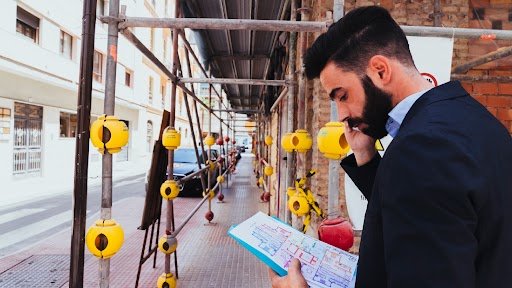The modern world relies on a complex network of infrastructure that’s often easy to overlook. Under our streets and across the landscape, pipelines, cables, and other structures deliver our water, energy, and transportation. They are always out of sight, and we often forget they’re working around the clock. But when these systems fail, the results can be troublesome and expensive. A burst water main can flood a neighborhood, a failing bridge support can stop traffic for days, and a compromised pipeline can create serious safety and environmental problems. The best way to prevent these issues is to identify the core problem long before it becomes a disaster. Early warning systems, using tools from pressure monitors to uncomplicated Leak Detection, help us catch problems while they’re still small.
The Hidden Costs of a ‘Wait Until It Breaks’ Strategy
For years, the standard approach to maintaining this essential network has been reactive. A component is often used until it breaks, which can lead to an emergency repair. While this might seem direct, it’s a costly and inefficient way to operate. Emergency fixes always cost more than planned maintenance. They involve premiums for after-hours work, rushing materials to the site, and dealing with the secondary damage from the failure itself. Think of the extra expenses for roadwork, environmental cleanup, and property repairs that come with a major pipeline burst.
Beyond the immediate financial hit, there are other consequences to consider. Service disruptions can affect thousands of people, shut down businesses, and create major headaches for the public. A power outage or a water service interruption isn’t just a minor annoyance; it can impact public health and safety. For any organization, this kind of breakdown can also harm its reputation. Communities rely on these services to be dependable, and an unexpected failure can break that trust. This reactive model puts companies on defense, always responding to the next crisis instead of managing their own operations. It’s a short-term fix that leads to long-term issues, including a shorter lifespan for vital equipment.
Shifting to a Proactive Strategy with Early Detection
A better way forward is to move from a reactive to a proactive approach using early detection systems. In simple terms, these setups act as a constant health check for your assets. They use a network of sensors to collect information on the condition and performance of the equipment in real time. These sensors can measure a wide range of factors, like pressure, flow rates, temperature, vibrations, and ground moisture. The goal isn’t just to gather information, but to gather the correct information that points to a developing issue.
All this data is sent to a central control system that reviews it 24/7. The system is designed to recognize normal operations. When it detects a small change, such as a subtle drop in pipeline pressure or an unusual vibration in a bridge joint, it immediately alerts the operations team. The notification gives staff a precise location and the nature of the problem. This allows a maintenance crew to investigate and fix a minor, manageable issue long before it can turn into a full-blown failure. By addressing a minor crack or faulty valve instead of a burst pipe, they can save a great deal of time and money.
The Key Benefits of a Proactive Approach
The advantages of this progressive strategy are clear. By finding minor issues early, organizations can schedule repairs during regular work hours, which is much less costly. This method also helps extend the life of your equipment. Making minor, timely repairs prevents the kind of wear that leads to a much shorter service life for expensive assets. It also enables more effective budget and resource planning, as you gain a clearer picture of your entire network’s health.
Conclusion
In the end, early detection systems create a safer environment for the public and for the workers who maintain these networks. Identifying possible hazards before they worsen reduces the risk of accidents and environmental damage. Following this technology is more than an operational upgrade; it’s a change in how we manage our essential services. It’s the difference between reacting to emergencies and being in control of your operations. In a world that depends on dependable infrastructure, being able to see problems coming isn’t just an advantage, it’s a necessity.
Contact UTSI to learn how our early detection solutions can safeguard your critical infrastructure.


